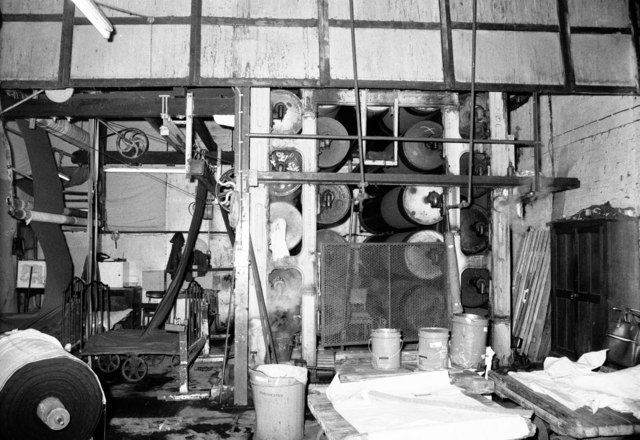 | ||
In textile manufacturing, finishing refers to the processes that convert the woven or knitted cloth into a usable material and more specifically to any process performed after dyeing the yarn or fabric to improve the look, performance, or "hand" (feel) of the finish textile or clothing. The precise meaning depends on context.
Contents
- Introduction
- Purification and preliminary processes
- Coloration
- Finishing
- Quality oriented
- Design oriented
- Handle oriented
- Special finishes for natural fibers
- Special finishes for synthetic fibers
- References
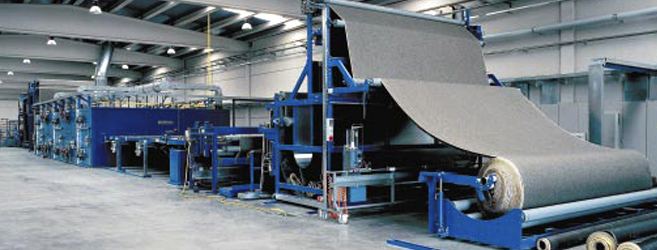
Some finishing techniques such as bleaching and dyeing are applied to yarn before it is woven while others are applied to the grey cloth directly after it is woven or knitted. Some finishing techniques, such as fulling, have been in use with hand-weaving for centuries; others, such as mercerisation, are byproducts of the Industrial Revolution.
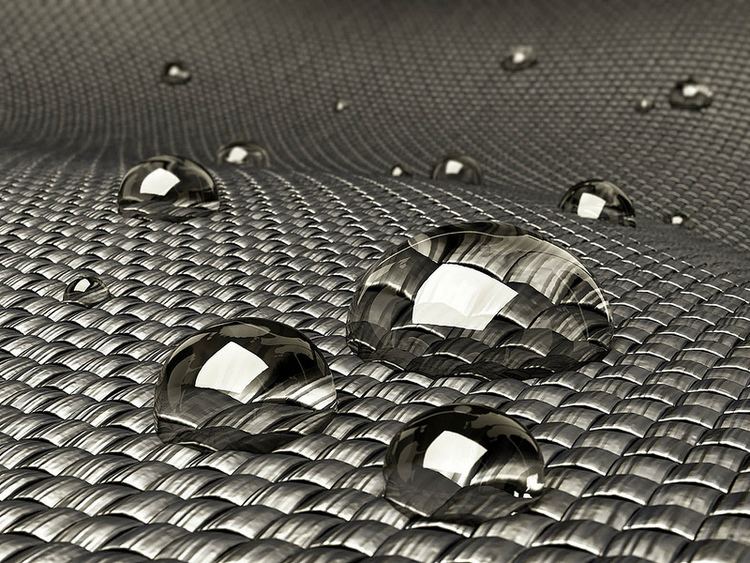
Introduction
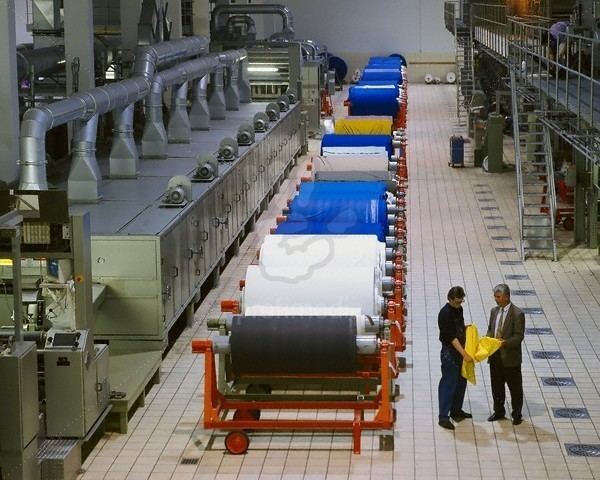
In order to impart the required functional properties to the fiber or fabric, it is customary to subject the material to different types of physical and chemical treatments. For example, wash and wear finish for a cotton fabric is necessary to make it crease-free or wrinkle-free. In a similar way, mercerising, singeing, flame retardant, water repellent, waterproof, anti-static and peach finishing achieve various fabric properties desired by consumers.

The use of 100% synthetic textiles has increased considerably since the development of textured yarns made of filaments, and the growing production of knit goods. The use of open weave has enabled production of lighter, breathable, fabrics to ensure better wearing comfort.
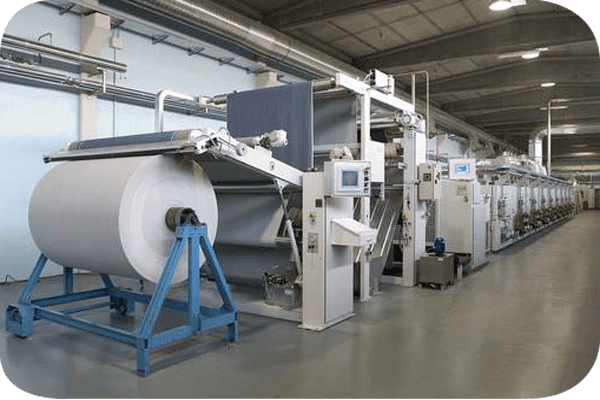
The properties of petroleum-based synthetic fibers, most important among them being polyamide, polyester and polyacrylonitrile, are essentially different from those of natural cellulosic and protein/wool fibers. Hence the sequence of finishing operations is likely to be different. While cellulosic fabrics require a resin finishing treatment to impart easy-care properties, synthetic fibers already exhibit these easy-care criteria and require only a heat setting operation.
Purification and preliminary processes
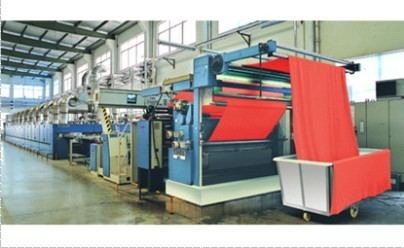
The grey cloth,woven cotton fabric in its loom-state, not only contains impurities, including warp size, but requires further treatment in order to develop its full textile potential. Furthermore, it may receive considerable added value by applying one or more finishing processes.
Coloration
Color is a sensation caused when white light from a source such as the sun is reflected off a pigment on the surface. The pigment selectively reflects certain wavelengths of light while absorbing others. A dye can be considered as a substance that can be fixed to a material that has these properties. The colour it reflects is defined by the structure of the molecule, and particular the parts of the chromogen molecule called the chromophore group. There are two processes used to apply colour:
Finishing
Mechanical finishing
Chemical finishing
Quality-oriented
Design-oriented
Handle-oriented
Special finishes for natural fibers
Bio-polishing removes the protruding fibers of a fabric through the action of an enzyme. Enzymes, such as cellulase for cotton, selectively remove protruding fibers. These enzymes may be deactivated by an increase in temperature.
Mercerisation makes woven cotton fabric stronger, more lustrous, to have better dye affinity, and to be less abrasive.
Raising lifts the surface fibers to improve the softness and warmth, as in flannelette.
Peach Finish subjects the fabric (either cotton or its synthetic blends) to emery wheels, making the surface velvet-like. This is a special finish used mostly in garments.
Fulling or waulking is a method of thickening woollen material to make it more water-resistant.
Decatising to bring dimension stability to woollen fabrics.
Calendering makes one or both surfaces of the fabric smooth and shiny. The fabric is passed to through hot, fast-moving stainless steel cylinders.
Sanforizing or Pre-shrinking prevents a fabric and the produced garment from shrinking after production. This is also a mechanical finish, acquired by feeding the fabric between a roller and rubber blanket, in such a way the rubber blanket compresses the weft threads and imparts compressive shrinkage.
Crease-Resist finish or "wash-and-wear" or "wrinkle-free" finishes are achieved by the addition of a chemical resin finish that makes the fiber take on a quality similar to that of synthetic fibers.
Anti-microbial finish causes a fabric to inhibit the growth of microbes. The humid and warm environment found in textile fibers encourages the growth of the microbes. Infestation by microbes can cause cross-infection by pathogens and the development of odor where the fabric is worn next to skin. In addition, stains and loss of fiber quality of textile substrates can also take place. With an aim to protect the skin of the wearer and the textile substrate itself, an anti-microbial finish is applied to textile materials.
Special finishes for synthetic fibers
Heat-setting of synthetic fabrics eliminates the internal tensions within the fiber, generated during manufacturing, and the new state can be fixed by rapid cooling. This heat setting fixes the fabrics in the relaxed state, and thus avoids subsequent shrinkage or creasing of the fabric. Presetting of goods makes it possible to use higher temperature for setting without considering the sublimation properties of dyes and also has a favorable effect on dyeing behavior and the running properties of the fabric. On the other hand, post-setting can be combined with some other operations such as Thermasol dyeing or optical brightening of polyester. Post-setting as a final finish is useful to achieve high dimensional stability, along with desired handle. Heat-setting is an important part in textile finishing.
Stiffening and filling process: A stiffening effect is desirable in certain polyamides and polyester materials (e.g. petticoats, collar inner linings), which can be done by reducing the mutual independence of structural elements of fabric by polymer deposition on coating as a fine film.
Hydrophilic finishes compensate for lower moisture and water absorption capacity in synthetic fiber materials, which become uncomfortable in contact with skin. Certain products, based on modified (oxy-ethylated) polyamides, make the fabric more pleasant by reducing the cohesion of water so that it spreads over a larger area and thus evaporates more readily.
Anti-pilling finish alleviates pilling, an unpleasant phenomenon associated with spun yarn fabrics, especially when they contain synthetics. Synthetic fibers are more readily brought to the surface of a fabric due to their smooth surface and circular cross-section, and due to their higher tensile strength and abrasion resistance. With knit "picking" also occurs: by abrasion, individual fibers work themselves out of yarn loops onto the surface, and the garment catches on a pointed or rough object. Knitting is susceptible to these effects due to the open weave and bulky yarn.
Anti-static finish prevents dust from clinging to the fabric. Anti-static effective chemicals are largely chemically inert and require Thermasol or heat treatment for fixing on polyester fabrics. Polyether agents have been found to be useful but should not affect the dye-equilibrium on fiber, lest they impair the rubbing fastness. In general, Thermasol anti-static agents also have a good soil release action, which is as permanent as the anti-static effect. Anti-static finishes may also be of polyamide type, being curable at moderate temperatures.
Non-slip finishes give the filaments a rougher surface. Synthetic warp and weft threads in loosely woven fabrics are particularly prone to slip because of their surface smoothness when the structure of fabric is disturbed and appearance is no longer attractive. Silica gel dispersions or silicic acid colloidal solutions are used in combination with latex polymer or acrylates dispersions to get more permanent effect, along with simultaneous improvement in resistance to pilling or snagging. These polymer finishes are also capable of imparting a soft and smooth handle to synthetic fabric without making it water repellent.
Fire Resistant or Flame Retardant finish: to reduce flammability.
Anti-microbial finish: with the increasing use of synthetic fibers for carpets and other materials in public places, anti-microbial finishes have gained importance. Products which are commonly applied are brominated phenols, quaternary ammonium compounds, organo-silver and tin compounds, which can be applied as solutions or dispersions. They can also be incorporated in a polymeric film deposited on the surface to achieve controlled release.
